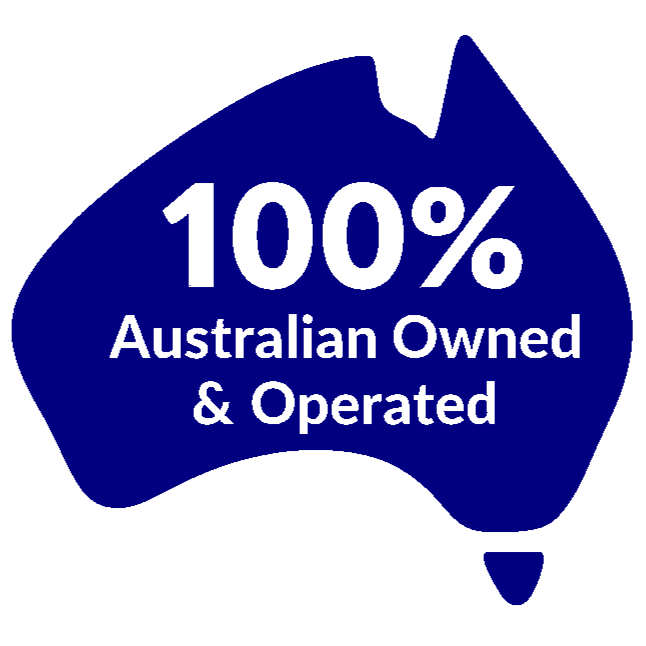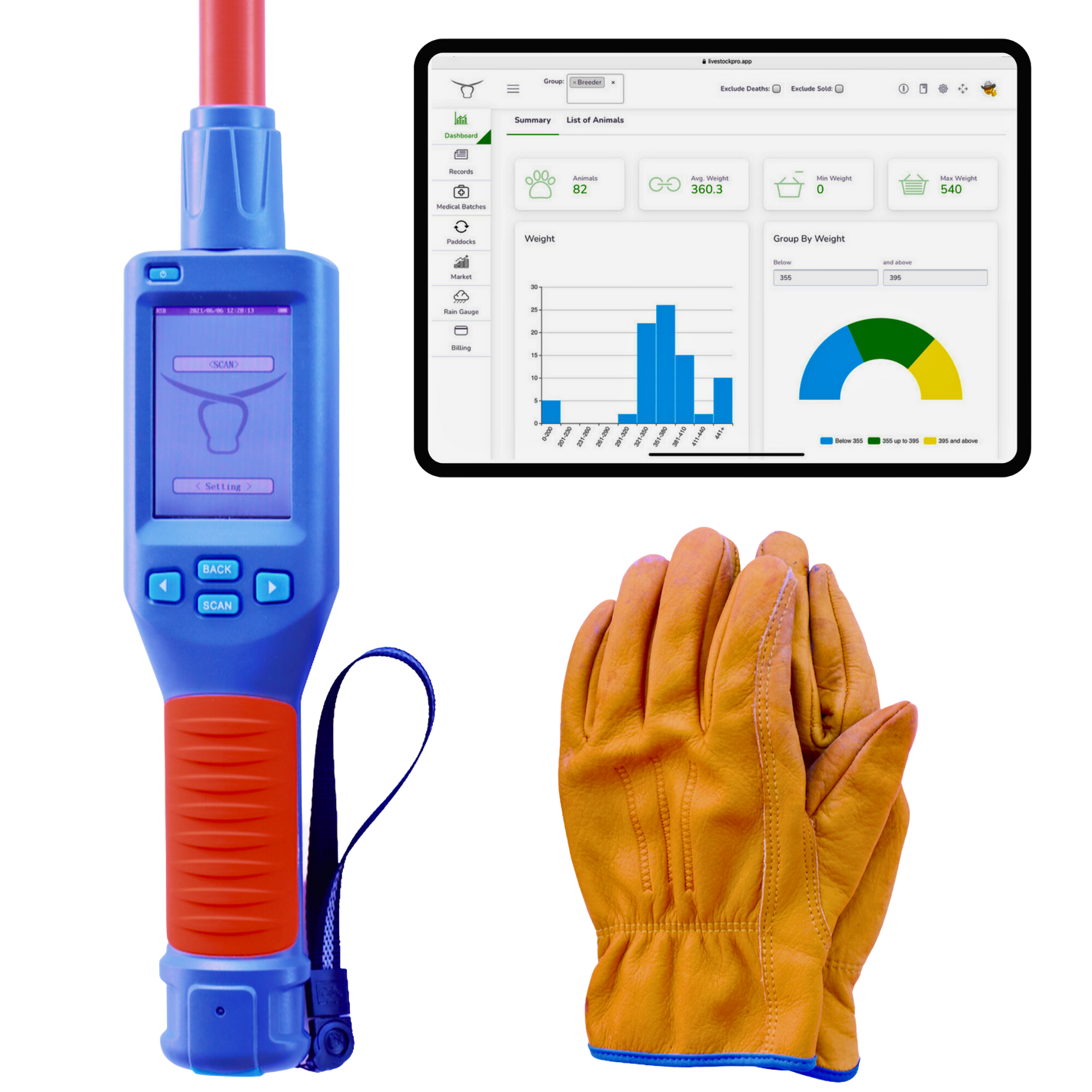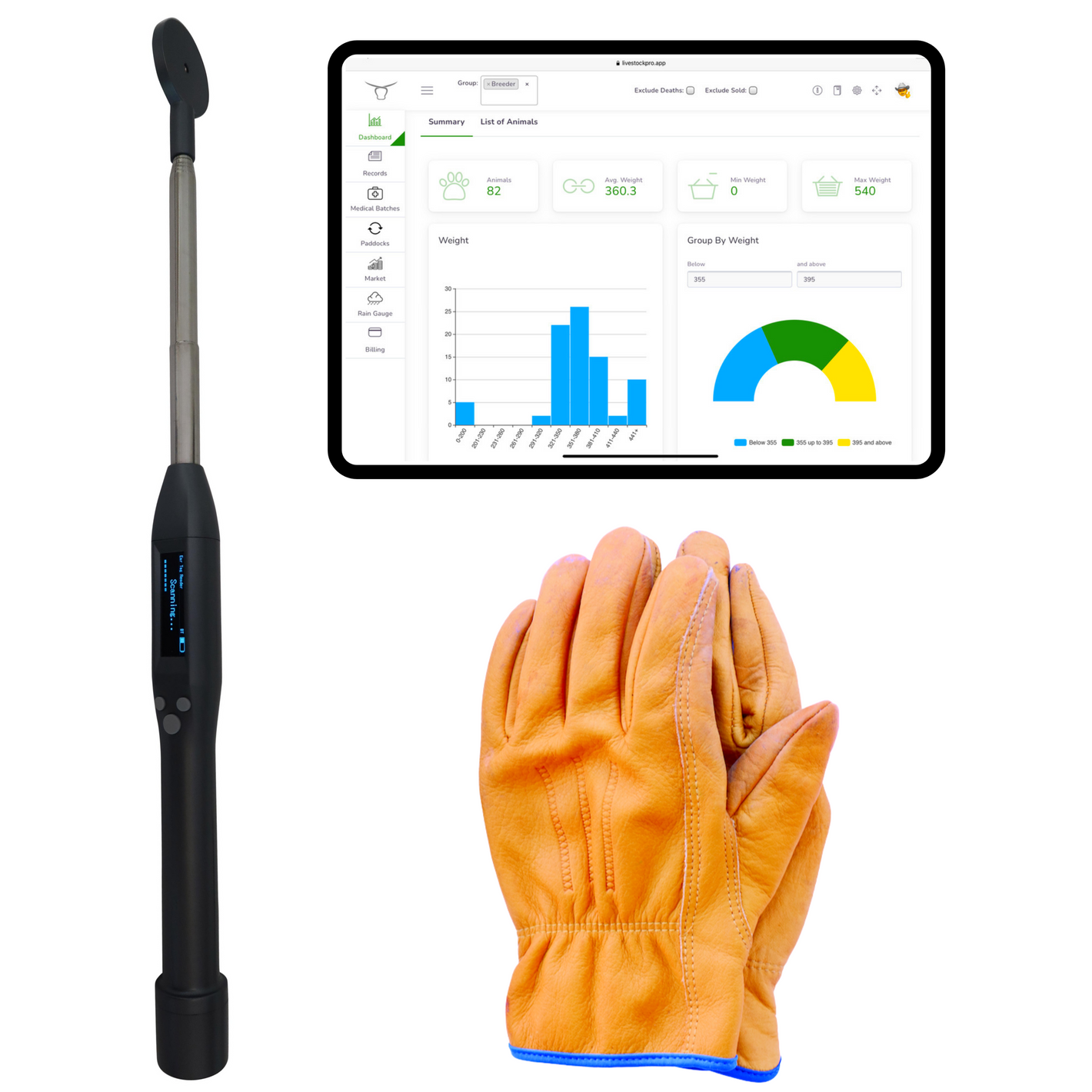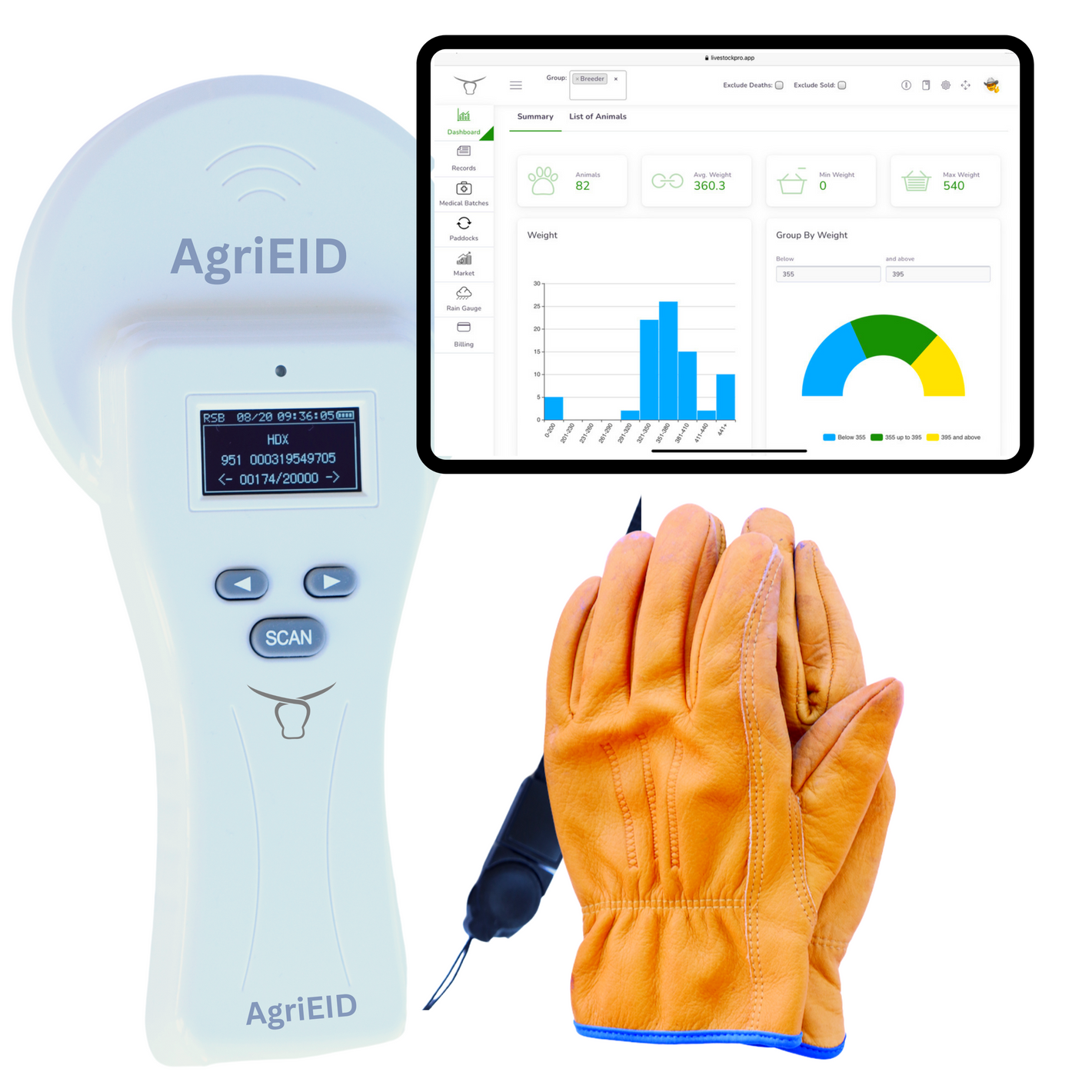NLIS (National Livestock Identification System) tag reader is a device used in the livestock industry to read and track electronic identification tags attached to livestock animals. It plays a crucial role in monitoring and managing livestock movements, providing essential data for traceability, biosecurity, and disease control. According to the Australian Department of Agriculture and Water Resources, an NLIS tag reader allows for the quick and accurate identification of animals through the reading of their electronic NLIS tags. The operation of an NLIS tag reader involves using radio frequency identification (RFID) technology to communicate with NLIS tags attached to animals. It uses electromagnetic fields to transfer data between the reader and the tag, allowing for the reading and recording of unique identification numbers and other information stored within the tag's microchip. An NLIS tag reader consists of several components, including an antenna to emit and receive signals, a reader unit to process and interpret the data, and a display screen to provide visual information. The device can communicate with NLIS tags either through direct contact or from a short distance, depending on the technology used. The use of NLIS tag readers in the livestock industry offers numerous benefits. It enables efficient and accurate identification of animals, simplifies data collection and management, enhances traceability and transparency in the supply chain, and supports better disease control and biosecurity measures. NLIS tag readers have applications in various sectors, including livestock production, processing, transportation, and regulatory compliance. There are different types of NLIS tag readers available in the market, including fixed readers installed in specific locations, handheld readers for portability and convenience, and portable readers that offer versatility and flexibility in different environments. When selecting an NLIS tag reader, several considerations should be taken into account, such as the specific needs and requirements of the operation, compatibility with existing systems, ease of use, durability, and cost-effectiveness. While NLIS tag readers provide significant benefits and advancements in livestock management, they may have limitations, such as the reliance on tag readability, potential tag damage or loss, and limitations in remote or rugged environments. Efforts are continuously being made to improve the technology, including advancements in RFID tags, data encryption, and connectivity options to enhance performance and reliability. In the future, it is anticipated that NLIS tag reader technology will further evolve, incorporating advancements such as real-time data transmission, integration with cloud-based platforms, and enhanced data analytics capabilities to revolutionize livestock management practices and drive greater efficiency and sustainability in the industry.
Key takeaways:
- NLIS Tag Reader facilitates livestock tracing: An NLIS Tag Reader is a device used to read NLIS tags, which are electronic identification tags placed on livestock. This enables farmers and authorities to trace and track the movement of livestock for disease control and management purposes.
- Components and communication: An NLIS Tag Reader consists of components like an antenna, reader circuitry, and a processor. It communicates with NLIS tags using RFID technology, allowing the reader to read unique identification numbers from the tags.
- Benefits and applications: NLIS Tag Readers provide benefits such as efficient livestock management, accurate data collection, and improved disease control. They are widely used in livestock industries, slaughterhouses, veterinary clinics, and government agencies for tracking and monitoring purposes.
What is an NLIS Tag Reader?
An NLIS tag reader, also known as a National Livestock Identification System (NLIS) tag reader, is a device specifically designed to read and decode NLIS tags. These electronic tags are utilized for identification and traceability purposes in livestock animals, which primarily include cattle, sheep, and goats. Leveraging radio frequency identification (RFID) technology, the reader captures and retrieves information stored on NLIS tags, including the unique animal identification number.
For farmers and livestock producers, an NLIS tag reader serves as a critical tool, enabling them to efficiently track and manage their animals. It provides accurate and real-time data about individual animals, such as their movement patterns, health records, and ownership history. This information holds immense significance in disease control, market access, and ensuring the safety and quality of meat products.
NLIS tag readers are available in several forms, ranging from handheld devices to fixed readers and automated gate systems. These versatile devices play a pivotal role in enhancing livestock management practices, improving traceability within the supply chain, and meeting industry and regulatory requirements.
How Does an NLIS Tag Reader Work?
NLIS tag readers play a crucial role in livestock management, helping to identify and track animals for various purposes. Understanding how an NLIS tag reader works is important for farmers and anyone involved in the livestock industry.
- Scanning: How Does an NLIS Tag Reader Work? The NLIS tag reader is used to scan the electronic ear tags of livestock. These ear tags contain a unique identification number that is read by the reader.
- RFID Technology: The tag reader uses RFID (Radio Frequency Identification) technology to communicate with the electronic tags. How Does an NLIS Tag Reader Work? The reader emits a radio frequency signal, which activates the tag and allows it to transmit its unique ID back to the reader.
- Data Capture: Once the tag reader receives the ID from the tag, it captures the information and stores it in its memory or transmits it to a connected system. How Does an NLIS Tag Reader Work?
- Information Retrieval: Farmers can access the stored data or retrieve it from the connected system, gaining valuable insights into the animal's history, health records, and location. How Does an NLIS Tag Reader Work?
- Record Keeping: NLIS tag readers enable accurate record-keeping, helping farmers maintain a comprehensive database of their livestock's movements, treatments, and performance. How Does an NLIS Tag Reader Work?
Understanding how an NLIS tag reader works is essential for efficient livestock management and ensuring compliance with regulatory requirements.
What Are the Components of an NLIS Tag Reader?
What Are the Components of an NLIS Tag Reader?
The NLIS tag reader is composed of several essential components, including a reader device, a display screen, a power source, and communication ports. The reader device plays a crucial role in the scanning and reading of NLIS tags. It is equipped with a built-in antenna that receives signals from the tags.
To provide users with visual information, the NLIS tag reader features a display screen that shows tag identification numbers and other relevant data. The power source, which can be a battery or AC adapter, supplies the necessary electrical energy for the tag reader to function effectively.
Furthermore, the tag reader is equipped with communication ports that facilitate the seamless transfer of data between the reader and external devices like computers or other systems.
In addition to these core components, some NLIS tag readers may incorporate additional features, such as memory storage, Bluetooth or Wi-Fi connectivity, and GPS capabilities. These features significantly enhance the versatility and functionality of the tag reader. They enable efficient data storage and transfer, wireless communication, and even location tracking.
To summarize, the key components of an NLIS tag reader include the reader device, display screen, power source, and communication ports. By understanding these components, users are empowered to make informed decisions when selecting the most suitable tag reader for their specific requirements.
How Does an NLIS Tag Reader Communicate with NLIS Tags?
NLIS tag readers communicate with NLIS tags through radio frequency identification (RFID) technology. How Does an NLIS Tag Reader Communicate with NLIS Tags? The reader emits a radio signal that activates the tag, allowing it to transmit its unique identification number back to the reader. This communication occurs wirelessly and in a contactless manner.
The communication process involves the following steps:
| 1. The NLIS tag reader sends out an electromagnetic signal in the form of a radio wave. How Does an NLIS Tag Reader Communicate with NLIS Tags? |
| 2. When the wave reaches an NLIS tag within its range, the tag's antenna captures the signal's energy. |
| 3. The tag converts this energy into power and uses it to transmit its unique identification number back to the reader. |
| 4. The reader receives the transmitted information and decodes it, identifying the specific animal or item associated with the tag. |
This communication method allows for efficient and rapid data transfer between the NLIS tag and the reader, making the identification process quick and accurate.
In the future, advancements in NLIS tag reader technology may include improved transmission range, better interoperability with different tag types, and enhanced data management capabilities. These developments could further streamline the communication process and make NLIS tag readers even more effective tools for livestock identification and traceability.
Consider consulting experts in NLIS technology or seeking recommendations from experienced users to choose the right NLIS tag reader for your specific needs.
Why are NLIS Tag Readers Used?
NLIS tag readers are used to efficiently and accurately track livestock for management and traceability purposes. This technology has become essential in the livestock industry, offering numerous benefits for farmers and government regulators.
1. Livestock management: NLIS tag readers enable farmers to monitor and record vital information about their animals, such as birth dates, vaccinations, and medical treatments. This data helps in improving breeding programs, optimizing feeding regimes, and managing disease outbreaks.
2. Traceability: NLIS tag readers play a crucial role in ensuring the safety and integrity of the food supply chain. By scanning the tags on each animal, the reader can trace their movements, locations, and history. This helps in identifying the source of disease outbreaks, implementing recalls if necessary, and providing consumers with confidence in the quality of the products they consume.
3. Compliance: Governments use NLIS tag readers to enforce regulatory standards and compliance. By having accurate and up-to-date records of each animal's movements and treatments, authorities can verify that farmers are adhering to animal welfare and food safety regulations.
NLIS tag readers are used to streamline livestock management, ensure traceability, and enforce compliance with industry regulations. Incorporating this technology enhances productivity, safeguards animal well-being, boosts consumer confidence in the agricultural sector, and addresses the question, "Why are NLIS Tag Readers Used?"
What are the Benefits of Using NLIS Tag Readers?
- Using NLIS tag readers provides several benefits in the management and monitoring of livestock such as efficiency, accuracy, data management, traceability, and disease control.
- Efficiency: NLIS tag readers automate the process of identifying and tracking individual animals, saving time and reducing labor costs.
- Accuracy: With NLIS tag readers, the risk of human error in manually recording animal information is eliminated, ensuring accurate data collection.
- Data management: NLIS tag readers enable seamless data collection and storage, allowing for easy retrieval and analysis of animal information for decision-making purposes.
- Traceability: NLIS tag readers enable the traceability of animals throughout the supply chain, enhancing food safety and biosecurity measures.
- Disease control: NLIS tag readers facilitate the early detection and containment of diseases by providing real-time information on animal movements and health status.
Pro-tip: When choosing an NLIS tag reader, consider the ease of use, durability, battery life, read range, and compatibility with your management software.
What Types of NLIS Tag Readers are Available?
Looking to discover the range of NLIS tag readers out there? Look no further! In this section, we'll explore the different types of NLIS tag readers available to meet your specific needs. From fixed readers designed for permanent installation to handheld and portable options for on-the-go convenience, we'll dive into the features and advantages each type offers. So, let's uncover the world of NLIS tag readers and find the perfect fit for you!
Fixed NLIS Tag Readers
Fixed NLIS tag readers, also known as fixed NLIS tag reader technology, are a crucial component in the livestock industry. These readers are specifically designed to track and monitor animals by reading and recording NLIS (National Livestock Identification System) tags attached to them. Typically, these fixed NLIS tag readers are installed in strategic locations like barns or gateways. By continuously monitoring animals as they pass through these specific areas, these tag readers allow for seamless data collection and tracking.
The advantages of fixed NLIS tag readers are best illustrated through a comprehensive table that highlights their features and benefits:
| Features | Benefits |
|---|---|
| Installed in fixed locations | Allows for continuous monitoring of animals, ensuring the collection of accurate data |
| Automates data collection | Reduces human error and eliminates the need for manual data entry, optimizing efficiency |
| Can process large volumes | Streamlines the identification process, saving valuable time and effort |
| Seamless integration | Facilitates the sharing of data across different platforms, enabling efficient livestock management |
| Provides real-time information | Enables quick decision-making by providing up-to-date animal data |
Apart from their functionality, fixed NLIS tag readers play a pivotal role in automated livestock management systems, providing invaluable insights into animal movement and health. These readers are an economical and efficient solution for large-scale livestock operations, significantly contributing to improved productivity and overall operational efficiency.
Handheld NLIS Tag Readers
When it comes to handheld NLIS tag readers, they offer a convenient and versatile option for livestock management. These portable devices provide ease of use and flexibility in various applications. Here are some key benefits and considerations for selecting a handheld NLIS tag reader:
- Portability: Handheld NLIS tag readers are compact and lightweight, allowing for easy handling and mobility.
- Convenience: With a handheld NLIS tag reader, you have the flexibility to read tags on individual animals without the need for them to be confined in a specific area.
- User-friendly interface: Look for a handheld NLIS tag reader with a simple interface and intuitive controls for easy operation by users of all experience levels.
- Battery life and durability: Consider the battery life and durability of the handheld NLIS tag reader, ensuring it can withstand the rigors of daily use in various weather conditions.
- Connectivity options: Check if the handheld NLIS tag reader offers wireless or Bluetooth connectivity for seamless data transfer to a computer or mobile device.
- Compatibility: Ensure that the handheld NLIS tag reader is compatible with the specific NLIS tags used in your region.
- Price: Consider your budget and look for a handheld NLIS tag reader that offers a balance between cost and features.
By considering these factors, you can choose the right handheld NLIS tag reader that meets your needs for efficient livestock management.
Portable NLIS Tag Readers
Are handheld devices designed for ease of use and convenience. These readers are compact and lightweight, making them highly portable for use in various locations. They offer the flexibility to read and record NLIS tags on animals without the need for a fixed installation.
Here is a table highlighting the benefits of Portable NLIS Tag Readers:
| Benefits of Portable NLIS Tag Readers |
|---|
| Portable and lightweight |
| Easy to carry and use on-the-go |
| Suitable for small-scale operations |
| Can be used in remote areas |
| Allows for quick and efficient data collection |
Portable NLIS Tag Readers are particularly useful for farmers who have a small number of animals and need a cost-effective option for individual animal identification and data management. They offer the convenience of portability without compromising functionality.
If you are a farmer or livestock manager with a smaller operation, portable NLIS tag readers can be a practical and efficient choice for animal identification and data collection.
How to Choose the Right NLIS Tag Reader?
Looking to choose the right NLIS tag reader? Here's what you need to know! We'll dive into the key considerations for selecting an NLIS tag reader so you can make an informed decision. From factors like durability to reading range, we'll cover it all. Stay tuned to find out which NLIS tag reader best suits your specific needs. Get ready to tag along with us on this informative journey!
Considerations for Selecting an NLIS Tag Reader
When selecting an NLIS tag reader, there are several important considerations to take into account:
- Compatibility: Ensure that the tag reader is compatible with the NLIS system used in your region. Different countries may have different NLIS systems.
- Functionality: Determine the specific features and capabilities that you require from a tag reader. Consider whether you need a fixed, handheld, or portable device, as well as any additional functionalities like data storage or wireless connectivity.
- Ease of use: Look for a user-friendly interface and intuitive controls, as well as a clear display for easy reading of tag information.
- Durability: Consider the durability and ruggedness of the tag reader, particularly if it will be used in outdoor or harsh environments.
- Battery life: Take into account the battery life of the tag reader, especially if you anticipate extended periods of use without access to charging facilities.
- Cost: Compare the prices of different tag readers and consider their value for money based on their features, functionality, and durability.
By considering these considerations for selecting an NLIS tag reader, you can select an NLIS tag reader that best fits your specific needs and requirements.
In 1999, the National Livestock Identification System (NLIS) was implemented in Australia to track and trace individual livestock animals for biosecurity, food safety, and market access purposes. As part of this system, NLIS tag readers were developed to read and interpret the electronic identification tags that are required for cattle, sheep, and other livestock. Since then, NLIS tag readers have become an essential tool for livestock producers, government agencies, and industry stakeholders to accurately identify and manage livestock information throughout the supply chain.
What Are the Limitations of NLIS Tag Readers?
When using NLIS tag readers, it's important to be aware of their limitations to ensure effective and accurate livestock identification and tracking. Here are some key limitations to consider:
- Read range: NLIS tag readers have a limited read range, which can vary depending on environmental factors such as distance, obstacles, and interference. It's essential to position the reader within the recommended range for optimal results.
- Reader compatibility: Not all NLIS tag readers are compatible with every type of tag. It's crucial to ensure that the reader you choose is compatible with the specific NLIS tags you are using.
- Tag placement: Incorrect tag placement can affect the readability of the tags. Tags that are placed too high, too low, or on areas with excessive hair or tissue may not be accurately read by the NLIS tag reader.
- Reader accuracy: While NLIS tag readers are designed to provide accurate identification, there can still be instances of misreads or errors. Regular maintenance and calibration of the reader can help improve accuracy.
Pro-tip: Familiarize yourself with the user manual of your NLIS tag reader to fully understand its limitations and optimize its performance for accurate and efficient livestock tracking. What Are the Limitations of NLIS Tag Readers? When using NLIS tag readers, it's important to be aware of their limitations to ensure effective and accurate livestock identification and tracking. Here are some key limitations to consider:
- Read range: NLIS tag readers have a limited read range, which can vary depending on environmental factors such as distance, obstacles, and interference. It's essential to position the reader within the recommended range for optimal results.
- Reader compatibility: Not all NLIS tag readers are compatible with every type of tag. It's crucial to ensure that the reader you choose is compatible with the specific NLIS tags you are using.
- Tag placement: Incorrect tag placement can affect the readability of the tags. Tags that are placed too high, too low, or on areas with excessive hair or tissue may not be accurately read by the NLIS tag reader.
- Reader accuracy: While NLIS tag readers are designed to provide accurate identification, there can still be instances of misreads or errors. Regular maintenance and calibration of the reader can help improve accuracy.
Pro-tip: Familiarize yourself with the user manual of your NLIS tag reader to fully understand its limitations and optimize its performance for accurate and efficient livestock tracking.
What Are the Future Developments in NLIS Tag Reader Technology?
The future developments in NLIS tag reader technology hold exciting possibilities that will completely transform livestock management. Here are some key advancements to anticipate:
| 1. Improved Accuracy: In the future, NLIS tag readers will harness the power of advanced algorithms and AI technologies. This will allow for more precise and dependable identification and tracking of livestock. |
| 2. Real-time Monitoring: The forthcoming NLIS tag readers will offer real-time monitoring capabilities for livestock. This means you will receive immediate updates on animal location, health status, and behavior patterns. |
| 3. Integration with IoT: NLIS tag readers will seamlessly integrate with Internet of Things (IoT) technology. This integration will enable effortless data exchange and connectivity between the reader and other devices like mobile apps and farm management systems. |
| 4. Enhanced Durability and Functionality: The future NLIS tag readers will be engineered to endure harsh weather conditions and rugged environments. This ensures their long-lasting performance and uninterrupted operation. |
| 5. Wireless Connectivity: NLIS tag readers will incorporate wireless connectivity options like Bluetooth and Wi-Fi. This will facilitate easy data transfer, reducing the reliance on physical connections. |
Pro-tip: To stay ahead of the curve and make informed decisions regarding new technology for your livestock management practices, keep yourself updated with industry news and attend relevant conferences and exhibitions. This will help you stay informed about the latest advancements in NLIS tag reader technology.
Some Facts About NLIS Tag Reader:
- ✅ NLIS Tag Reader is a durable and user-friendly electronic identification (EID) solution for livestock management in Australia.
- ✅ It can be used in both fixed installations and mobile setups, providing efficient tracking and compliance for farmers.
- ✅ NLIS Tag Reader is compatible with all NLIS tags and can store up to 50,000 tag numbers.
- ✅ The reader has a faster speed and greater reading distance, scanning 10,000 tags on a single charge.
- ✅ NLIS Tag Reader is compatible with AgriEID livestock management software, enhancing productivity and efficiency.
Frequently Asked Questions
1. Can the NLIS Tag Reader download data for efficient tracking and management of livestock?
Yes, the NLIS Tag Reader is equipped with the capability to download data, allowing for efficient tracking and management of livestock. This feature enables farmers to easily retrieve essential data for various farm management tasks.
2. Does the NLIS Tag Reader support AgriEID livestock management software?
Yes, the NLIS Tag Reader is compatible with AgriEID livestock management software. This integration enhances productivity and efficiency, as it allows farmers to seamlessly transfer scanned RFID ear tag numbers directly to the software application.
3. Is the NLIS Tag Reader suitable for use in harsh conditions?
Yes, the NLIS Tag Reader is designed to withstand harsh conditions. The NLIS Enviro Tags used in conjunction with the reader are made of UV-resistant material for resilience and longevity, ensuring reliable traceability even in challenging environments.
4. Can the Mini Cattle Tag Reader read NLIS EID tags?
Yes, the Mini Cattle Tag Reader is guaranteed to read all NLIS approved animal EID tags, including NLIS cattle tags. This makes it a versatile tool for livestock management, catering to a wide range of tagging systems.
5. How long does the express delivery of the Mini Cattle Tag Reader take?
The Mini Cattle Tag Reader offers express delivery within 5-7 business days. This ensures quick delivery of the product for farmers who need it promptly.
For more information on NLIS Tag Reader products please visit https://nlis.co



